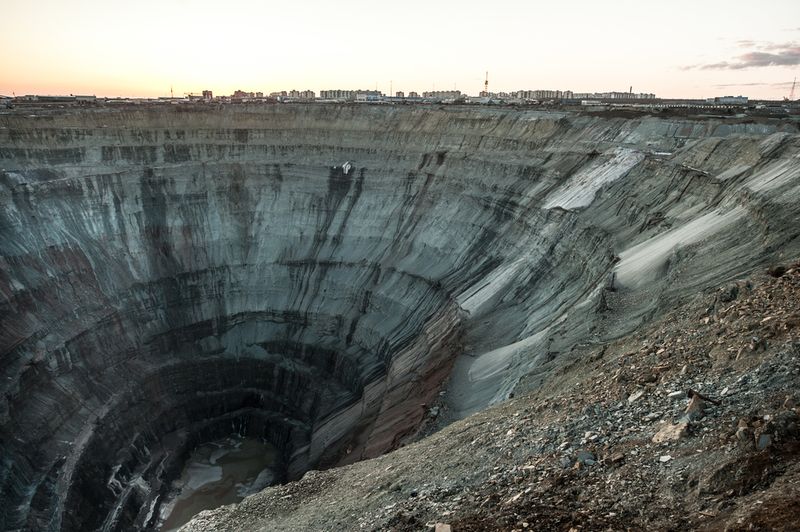Scientists used sound waves to estimate the composition of the Earth’s upper mantle and found evidence that around a quadrillion tons of diamonds may be buried somewhere over 160 kilometers (100 miles) deep beneath our feet.
The research, based on decades of seismic activity data, was reported in the journal Geochemistry, Geophysics, Geosystems back in 2018.
Seismographers register the waves from all the movements within the Earth, such as earthquakes. They are mechanical waves moving at certain speeds depending on the material they go through.
Based on the data, the researchers tried to reconstruct what the interior of the Earth is like – and that’s where they stumbled upon something interesting.
They found certain areas in which the seismic waves tend to speed up without explanation. These regions are called “cratonic roots” and are the oldest, most immovable sections of continental tectonic plates. They are sometimes seen as upside-down mountains stretching as deep as 320 kilometers (200 miles).
To explain the seismic data, the team started playing with the possible composition of these roots. They arrived at the conclusion that if these structures contain between 1 and 2 percent diamond, then the speed of the seismic waves makes sense.
This might not seem much in terms of the total amount of material in the crust and mantle, but it is 1,000 times more diamonds than expected.
"This shows that diamond is not perhaps this exotic mineral, but on the [geological] scale of things, it's relatively common," Dr Ulrich Faul, senior author from MIT, said in a statement in 2018.
"We can't get at them, but still, there is much more diamond there than we have ever thought before," Dr Faul followed.
"It's circumstantial evidence, but we've pieced it all together," Faul added. "We went through all the different possibilities, from every angle, and this is the only one that's left as a reasonable explanation."
Diamonds are formed under extremely high-temperature and high-pressure conditions found below Earth’s crust. The reason they are rare is that they only get close to the surface in specific eruptions that carve out geological pipes made of a rock called kimberlite. A large concentration of them deep below the crust, therefore, is not too bizarre of a hypothesis.
The study is published in Geochemistry, Geophysics, Geosystems.
An earlier version of this article was published in July 2018.




